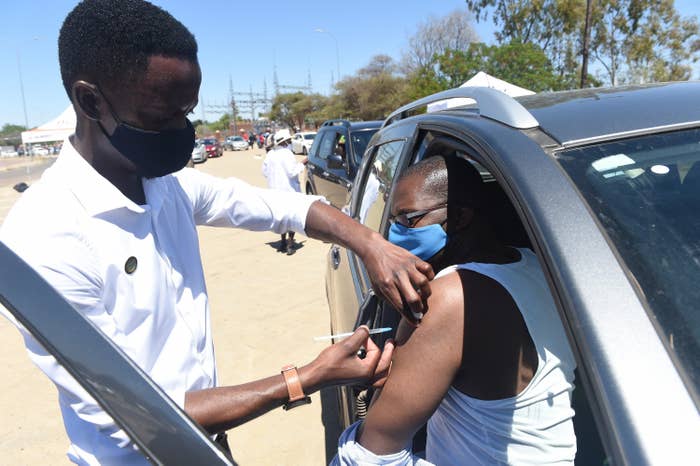
Governments around the world are struggling to suppress a tidal wave of the Omicron variant, which appears to be spreading faster and evading vaccines more efficiently than any previous COVID-19 variant. Most developed nations have responded to this threat by encouraging their populations to get booster shots and doubling down on vaccination efforts on their home turf.
As the head of a global organization dedicated to vaccinating the world, I can see that focusing on this alone is a dangerous mistake.
If the priority with each new variant of concern is to race toward reopening society by offering boosters instead of tackling the root cause — namely, the fact that nearly 3.5 billion people still have not been vaccinated — then we could face an endless cycle of resurgences and leave the door open for more dangerous variants.
This crisis is far from over, and we will never end it until we stop the virus from spreading in all parts of the world.
Even though clinical infection with Omicron appears to be more resistant to vaccines, to the best of our knowledge, global vaccination still remains the most effective way to protect people from severe disease and death. Vaccination, even in the Omicron era, likely prevents the overwhelming of health systems and slows transmission, preventing further mutations and new variants from emerging.
Yet, more than a year after COVID-19 vaccines first became available, about 43% of the world — predominantly people living in the poorest countries — have not yet had their first shot.
Initially, the main reason for this was vaccine hoarding by the world’s wealthiest countries, as well as export restrictions imposed by some countries on both vaccines and the materials needed to make them.
This has severely hampered the global effort led by COVAX — a collaboration between Gavi, my organization, UNICEF, WHO, and the Coalition for Epidemic Preparedness Innovations (CEPI) — to make COVID-19 vaccines equitably available to people in all corners of the world, particularly the 92 lower-income countries that would have otherwise struggled to get access.
The good news is that with 1.5 billion doses now being manufactured a month and 12 billion expected to be produced in total by the end of the year — enough to fully vaccinate everyone on this planet — global supply constraints are now easing and governments are throwing their weight behind COVAX.
By the end of the month, COVAX will have allocated 1.6 billion doses and will have shipped over 900 million doses to 144 economies, the vast majority to lower-income countries. And by early 2022, we will have shipped enough doses to reach our original target of protecting on average around 20% of people in most of these countries, including all those most at risk, such as frontline healthcare workers and vulnerable people.
However, the danger now with Omicron is that if governments once again turn their attention inward and focus all attention toward making boosters available to their citizens, it could again start to hinder equitable access and further prolong the global crisis. Or if the science determines that new variant-specific vaccines are necessary, it seems likely these new vaccines could be hoarded and not made available to those living in lower-income countries.
At first glance, the case for boosters may seem strong, with evidence to suggest that a third dose can provide additional protection and prevent people from becoming infected. But while this could help to slow the spread of this new variant, we still don’t know Omicron’s potential to cause harm.
Moreover, there is no evidence to suggest that two doses of existing vaccines are any less effective against Omicron in protecting people from severe disease, hospitalization, or death. This means that getting boosters to low-risk people who already have some protection will only have a limited impact on fighting the disease if we don’t also radically reduce the number of people who are still unvaccinated.
Yet, since Omicron emerged, we have already started to see some donor governments slowing the speed at which they are donating vaccines to COVAX, and if high-income countries increase their purchases of products, the worry now is that COVAX’s own supply lines will start to suffer.
Boosters are only ever likely to provide a temporary fix so long as the virus is allowed to spread freely elsewhere in the world. It does now seem highly likely that the COVID-19 endgame will mean it eventually becomes endemic. But we will get no closer to that point if, with each resurgence, we don’t start addressing the cause of new variants. That must be the priority for 2022: getting primary doses to everyone.
If we end up in a situation where we face Pi, Rho, Sigma, or Tao variants, and fourth, fifth, or sixth booster shots are being offered to some people while billions of others are still waiting on their first, then we really shouldn’t wonder why we are still in a state of global crisis.
